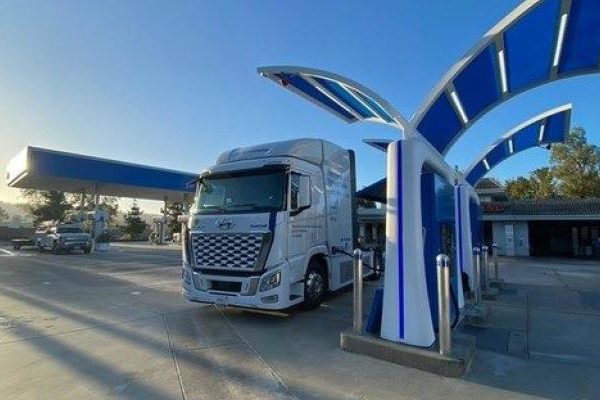
On October 8th, World Hydrogen Day is celebrated, a date that nods to the number 1.008, the atomic weight of this chemical element. In 2015, the Fuel Cell and Hydrogen Energy Association (FCHEA) of the United States established this day to recognize the relevance of hydrogen and its role in transitioning towards a cleaner and more equitable energy future.
Clean hydrogen, or hydrogen with a low carbon footprint, obtained from renewable energy sources or hydrocarbons with carbon capture technology – which reduces emissions – represents an extraordinary potential in the future energy landscape. This option emerges as a prominent solution for replacing traditional fuels and for energy storage, especially in sectors facing significant challenges in their decarbonization process. Although hydrogen is currently used in a wide range of chemical industries, it is important to note that the predominant production method employs natural gas, which leads to a significant CO2 emission.
The adoption of clean hydrogen as a fuel or integrated into energy production has the potential to substantially reduce CO2 emissions, either by serving as a means to store and return energy to the grid, providing stability to generation from renewable sources, or powering various types of electric vehicles.
Technologies associated with hydrogen are advancing in various sectors, from more efficient electrolyzers to hydrogen-powered forklifts or household applications. Despite these advancements, there are still challenges to face and costs to be reduced in order to maximize its potential in the global economic ecosystem.
The Hydrogen and Fuel Cell Technologies Office of the Department of Energy collaborates with various agencies to unleash the potential of hydrogen in the economy, reduce costs, and promote its growth; furthermore, historic investments are being made in this field that will improve accessibility to clean hydrogen in the United States.
However, this effort is not limited solely to this North American country; more than 25 governments worldwide are working on specific strategies involving hydrogen. Global-level initiatives are driving innovation and the adoption of solutions involving clean hydrogen.
Types of Hydrogen and Their Advantages
Hydrogen is classified into various types based on its production methods and CO2 emissions. Each type has its own advantages and disadvantages:
1. Green Hydrogen: It is produced through water electrolysis using renewable energies such as solar, wind, or hydroelectric power. It is sustainable due to its negligible emissions. Its ease of production and scalability allow for a wide range of applications. However, significant investments in infrastructure, technology, and developments to lower production costs are still required.
2. Blue Hydrogen: It is derived from hydrocarbons like natural gas, but carbon capture is employed to reduce its emissions impact. While not directly renewable, it is cleaner than grey hydrogen. One advantage is that existing natural gas infrastructure can be utilized.
3. Grey Hydrogen: It originates from fossil fuels without any emissions control and is used in industries such as refining. Despite being highly polluting due to its significant CO2 emissions, it is the most popular type currently.
Other types include brown, turquoise, pink, violet, and yellow, which involve different methods of obtaining hydrogen, including nuclear energy or thermochemical processes, among others.
The Future of Hydrogen in the Energy Landscape
The future of hydrogen in energy production looks promising, projecting to potentially represent up to 12% of the global energy total by 2050, with a notable reduction in associated costs.
Regarding current and future applications, the following stand out:
1. Industry Decarbonization: Replacement of fossil fuels in intensive sectors such as steel production and the chemical industry.
2. Integration with the Electrical Grid: Prospects and developments are aimed at enabling its association with the electrical grid to provide stability and reliability, thanks to hydrogen’s capacity to store energy during production peaks and release it during scarcity.
3. Sustainable Mobility: Viable alternatives are currently being developed for heavy and maritime transportation in combination with fuel cells.
4. Storage and Transportation: Hydrogen offers good possibilities for energy storage and transportation, allowing for the supply of energy to remote or non-integrated areas of the electrical grid.
5. Heating and Cooling: It is proposed as a source of both electric and thermal energy in both residential and industrial spaces.
However, significant challenges and obstacles still need to be addressed, including:
High Costs: Hydrogen production still does not match the production costs of conventional fossil sources.
Energy Efficiency: Since energy is required to produce hydrogen, efficiency must be increased to achieve a balance between consumed and produced energy.
Storage and Transportation: It is imperative to develop technologies that ensure safety and efficiency in these processes.
Infrastructure: Considerable investment is required in the development of new infrastructures or the adaptation of existing ones.
Scalability: The viability of this technology largely depends on the availability of large-scale renewable energy.
Competition with Other Technologies: The choice for implementation is subject to considerations of efficiency and costs in relation to other alternatives.
Policies and Regulations: Depending on the interests or projections of governments or administrations, developments in the implementation of hydrogen use will either advance or slow down.
Funding: The projected developments require both public and private investment.
While hydrogen will play a crucial role in transitioning to a more sustainable energy matrix, it is imperative to overcome these challenges to achieve widespread adoption.
But without emissions, marking a milestone in the search for energy sustainability.
At the heart of a fuel cell, hydrogen is channeled to the anode (“positive side”), where a catalyst triggers the production of positively charged ions, which flow through an electrolyte to the cathode (“negative side”), generating electricity in the process. In this final stage, oxygen combines with hydrogen ions and electrons, producing water and releasing heat.
Currently, there are various variants of fuel cells, each with specific applications and uses:
1. Alkaline Fuel Cells (AFC): Originating in 1932, they found use at NASA during the Apollo and Space Shuttle programs. They stand out for their affordability in production.
2. Solid Oxide Fuel Cells (SOFC): They require high temperatures to operate and are optimal for stationary domestic and commercial applications.
3. Proton Exchange Membrane Fuel Cells (PEMFC): They use a special electrolytic membrane and are ideal for vehicles and transportation systems, as well as for stationary applications. They are relatively recent.
4. Molten Carbonate Fuel Cells (MCFC): They operate at high temperatures and are being developed for industrial, military, and electric utility applications.
5. Phosphoric Acid Fuel Cells (PAFC): They use phosphoric acid as an electrolyte and find their main application in stationary power generation.
Fuel Cell Electric Vehicles (FCEV) operate with energy generated by fuel cells instead of conventional combustion engines. Despite their advantages, such as notable driving ranges and reduced recharge times, they face challenges such as high prices and limited hydrogen supply infrastructure.
Hydrogen Day is a reminder that the future of energy is imbued with the inexhaustible potential of the most abundant element in the universe. Fuel cells are the cornerstone of this revolution, promising a cleaner and more sustainable tomorrow for future generations.
By: Catherine Lafaurie/Fuel cells Works
Read the most up to date Fuel Cell and Hydrogen Industry news at FuelCellsWorks




